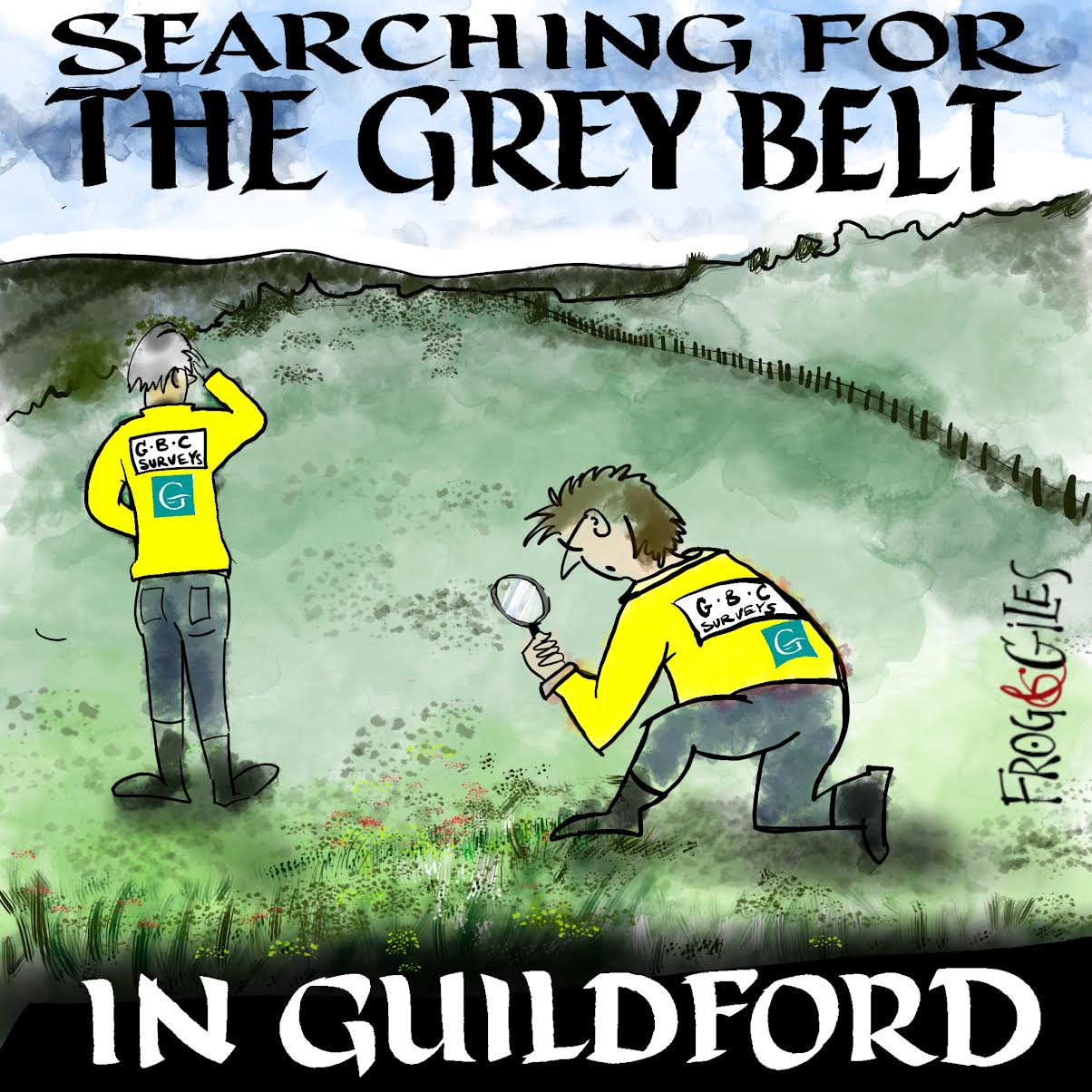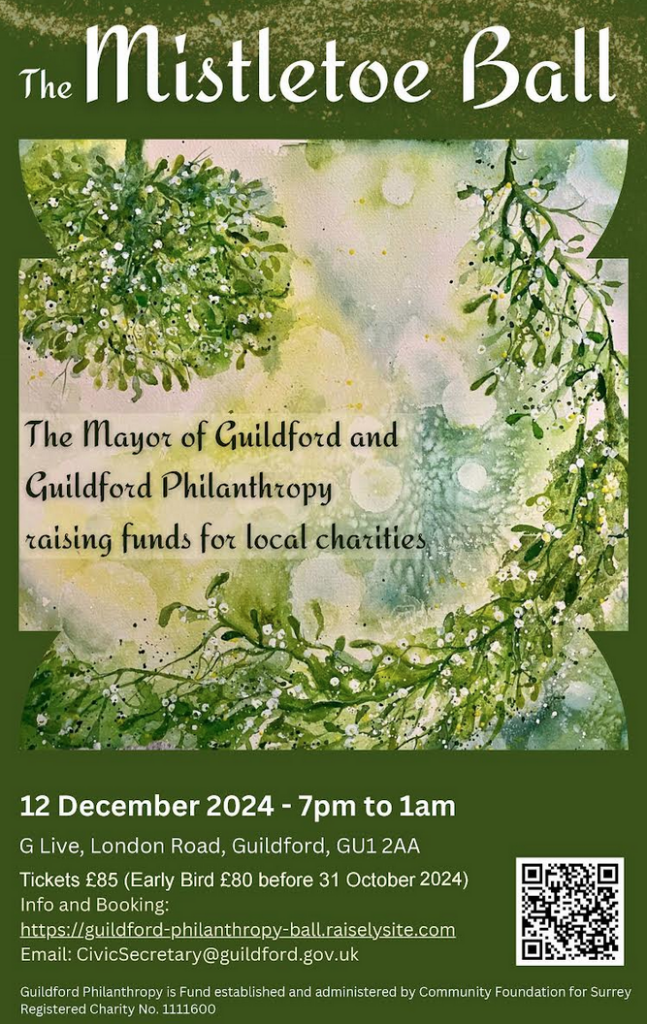 Abraham Lincoln
If given the truth, the people can be depended upon to meet any national crisis...
Abraham Lincoln
If given the truth, the people can be depended upon to meet any national crisis...
 Guildford news...
for Guildford people, brought to you by Guildford reporters - Guildford's own news service
Guildford news...
for Guildford people, brought to you by Guildford reporters - Guildford's own news service
The Dragon Says: Real Problems Require Real Councillors – Not Paper Ones
Published on: 10 May, 2015
Updated on: 12 May, 2015
 You will have heard of paper napkins, paper roses, even paper tigers but have you ever heard of “paper candidates”?
You will have heard of paper napkins, paper roses, even paper tigers but have you ever heard of “paper candidates”?
Unless you have become unusually familiar with local politics, probably not – but they do exist and thousands of Guildford voters voted for them on Thursday, in some cases hundreds more than were expected to.
It goes like this… all political parties, at a local level, can struggle to find candidates for all the seats in all the wards. In fact, at Thursday’s borough council election only the Conservatives fielded a full complement of 48 candidates; one for each council seat.
 But parties, even the Conservatives, do not usually have 48 people willing to become councillors with all the commitments it entails. Hardly surprising. It can require considerable amounts of time and effort and, apart from the paltry allowance of less than £5,000 per annum, one can only expect negative criticism, complaints, even vilification, from all and sundry.
But parties, even the Conservatives, do not usually have 48 people willing to become councillors with all the commitments it entails. Hardly surprising. It can require considerable amounts of time and effort and, apart from the paltry allowance of less than £5,000 per annum, one can only expect negative criticism, complaints, even vilification, from all and sundry.
Nonetheless, the political parties want to field as many candidates as possible so that they appear to be widely based and so constituents, right across a borough or county, are able to vote for their party and increase their popular vote.
So in the absence of keen or even just willing volunteers, individual party members are pressed into service, signing the necessary forms with some reluctance, the assurances that there is no chance of actually being elected ringing in their ears. They are only candidates “on paper” they are told, just “paper candidates”.
Of course, we all know what can happen to the best laid plans. Murphy’s law, “what can go wrong probably will” kicked in on Thursday and voters in Westborough, after years of returning Labour and Lib Dem councillors, consciously or not, followed the national pro-Conservative trend and voted in two of the three Conservative candidates named on their ballot papers, Elizabeth Hooper and Sheila Kirkland.
Such was the lack of spring in their steps as they mounted the platform to be announced winners they could have been climbing steps to a gallows. What had they let themselves in for and which energetic candidates had their candidature prevented from being elected?
We should not blame the “paper candidates” too much, if at all: they were only trying to serve their party. Nor should we get get on too high a horse to blame the political parties – all the main parties do this, by the way. Their argument will be, “Shouldn’t voters in any ward have a full political range of candidates to choose from?”
Before we, all too readily, point any fingers of blame perhaps we should think about our own role in the political process.
We all love to hate politicians these days but unless we are prepared to do our bit, by being aware, by taking an interest, by finding out about the candidates other than simply which party they stand for, we can hardly be surprised when the democratic process fails.
We all love to blame politicians but which of us is prepared to put our heads above the parapet? Which of us is prepared to give our energy and time and develop a thick enough skin to endure the inevitable and often unfair brick-bats?
Because all the time we don’t, all the time we are prepared to sit back and let others pull our weight, it is hardly surprising that the parties feel they have to resort to persuading reluctant or unsuitable candidates into standing just to make the numbers up.
And perhaps there is another question to ask: why do we even need political party allegiances in local politics? If you want someone to consider a planning application, chase up the dustmen or arrange for a pot hole to be filled do you really care about their political views? Does their view on Trident or EU membership count a jot?
The Dragon says it doesn’t. The Dragon says we should consider our councillor’s as individuals and not party members. We should look for capable people who want to serve their communities not those with any kind of party political ambition. But to do that takes a little bit of effort on our behalf so that we stop lazily putting a cross in a box simply because of a party label.
There are real problems to sort out, especially in wards like Westborough where there is a higher proportion of the less well off and a commensurately higher councillor case load.
Real problems require real councillors and real councillors come from real candidates – not paper ones.
Responses to The Dragon Says: Real Problems Require Real Councillors – Not Paper Ones
Leave a Comment Cancel replyPlease see our comments policy. All comments are moderated and may take time to appear.

"Found any?" - "Nope, it all looks green to me!" (See Opinion: The Future is Congested, the Future is Grey)




Recent Articles
- Photo Feature: Freiburg Guildford’s Twin – Friends for 45 years
- Review: The Consort Trio Makes Its Debut
- Sara Sharif Trial Latest – Sara’s Mother and Uncle Will Not Give Evidence
- Family Support Programme to End
- The Dragon Says: The London Road Saga – How Not to Manage Change
- Woking Council Had ‘No Business’ Making £2.4m Loan to a Private School
- City More Than Earn an Away Point – But Still Look for Their Next Win
- Highways Bulletin for November 18
- Surrey’s Gritters Gear Up for Winter
- Mayor’s Diary – November 17 to December 1


Recent Comments
- Dave Middleton on Ben Tries a Beryl
- John Perkins on Letter: Many Residents Appreciate LRAG
- Harry Eve on Ben Tries a Beryl
- Malcolm Fincham on Ben Tries a Beryl
- Olly Azad on City More Than Earn an Away Point – But Still Look for Their Next Win
- S Callanan on Woking Council Had ‘No Business’ Making £2.4m Loan to a Private School
Search in Site
Media Gallery
Dragon Interview: Local Artist Leaves Her Mark At One of England’s Most Historic Buildings
January 21, 2023 / No Comment / Read MoreDragon Interview: Lib Dem Planning Chair: ‘Current Policy Doesn’t Work for Local People’
January 19, 2023 / No Comment / Read MoreA3 Tunnel in Guildford ‘Necessary’ for New Homes, Says Guildford’s MP
January 10, 2023 / No Comment / Read More‘Madness’ for London Road Scheme to Go Ahead Against ‘Huge Opposition’, Says SCC Leader
January 6, 2023 / No Comment / Read MoreCouncillor’s Son Starts Campaign for More Consultation on North Street Plan
December 30, 2022 / No Comment / Read MoreCounty Council Climbs Down Over London Road Works – Further ‘Engagement’ Period Announced
December 14, 2022 / No Comment / Read MoreDragon Interview: GBC Reaction to the Government’s Expected Decision to Relax Housing Targets
December 7, 2022 / No Comment / Read MoreHow Can Our Town Centre Businesses Recover? Watch the Shop Front Debate
May 18, 2020 / No Comment / Read More






Bernard Parke
May 10, 2015 at 8:56 pm
I am sure that I am not only in asking why does The Borough of Guildford actually need 48 borough councillors? There are a considerable number of fully trained professional local government officers who, by their very training, are more than capable in dealing with the day to day problems that occur within the borough.
It is now common to see three such borough councillors in each ward plus a Surrey county councillor, making four in total.
Surely one councillor per ward would be sufficient?
Julian Lyon
May 12, 2015 at 10:41 pm
Single seat wards should give us the chance for the best candidates (party-affiliated or not) to come forward and make their case to the residents. This would (even with FPTP – first past the post) give a fair chance to everyone.
Peter Shaw
May 10, 2015 at 9:43 pm
Well said.
Having stepped up myself on Thursday and put my head above the parapet to stand as a councillor for GGG in Onslow it was slightly disheartening to see and hear about alleged ‘Paper Candidates’ being elected. Although hearsay, I had heard a rumour of one newly elected councillor coming off the podium and asking, where the Ward they were elected to was in Guildford.
I have spent the last six weeks campaigning, knocking on doors, talking to people about our policies and its a little disheartening to hear that in some places in Guildford this occurred.
GGG fielded 24 candidates and all of them were willing to spend the next four years representing Guildford. We did well under the first past the post system to gain three councillors. There was a total of over 22,000 votes for GGG candidates – so pretty good for a new political party.
But although the easy option may be to blame the electorate, I think its up to us candidates to do better in informing residents of local issues. GGG has learnt a lot from this election and we will work hard to inform the public about who we are, what we stand for and why you should vote for us on the local level, ready for the next lot of elections.
Jules Cranwell
May 11, 2015 at 8:37 am
The achievement of GGG should not be understated. For a party that did not exist a year ago to win more seats than well established parties such as Labour, Green, and UKIP, shows the depth of feeling in the borough on greenbelt issues. The Tory leadership will ignore this at their peril.
Julian Lyon
May 12, 2015 at 7:11 pm
Interesting analysis – not a complete picture though. GGG put up 13% of the candidates and received 13% of the vote (a party the name of which explicitly described what it was campaigning for); the Conservatives won with 47% of the votes from 27% of the candidates – paper or not – and this suggests a greater pro-rated support per candidate.
In the Ash wards, GGG fielded 7% of the candidates for 5% of the vote (Conservatives 46% for 66% of the votes).
In the Guildford urban area wards (without parish council representation and making up more than 50% of the Borough population), GGG managed 7% from 9% versus 42% from 24% for the Conservatives.
In the rural wards – those outside Ash and the Guildford urban area – GGG unsurprisingly fared a bit better: 33% from 24% versus the Conservatives’ 48% from 28% – a leverage factor of 1.7 for the Conservatives versus 1.4 for GGG.
Furthermore, the number of votes per successful councillor by party was as follows: Conservatives 35 at 2,116 votes each; Lib Dems 9 at 3,969 each; GGG 3 at 6,871 each; Labour 1 at 17,167 each; Greens 4,488 and UKIP 4,323 votes each failed to secure a councillor.
On the other hand, the number of Votes per Candidate fielded (paper candidates or not) was as follows: Conservatives 1,543, GGG 859, Lib Dems 794, UKIP 561, Labour 490, Green 360 and Others 283.
I think it is fair to say that the Conservatives won and that on a proportional allocation they would have had 22 seats versus 11 Lib Dems, 6 GGG, 5 Labour, 1 Green, 1 UKIP and 1 Other. That was not, however, the system in use and it would be wrong to assume the allocation would follow that split if PR were the system in use.
These are all my own numbers and were input by hand so there could be anomalies or errors which I am happy to correct if anyone wishes to put me right. I really must get out more!
Harry Eve
May 12, 2015 at 10:33 pm
I have been getting out more – and saw a wonderful Wych Elm today covered in winged fruits making it look quite exotic. Much more satisfying than analysing how the good people of Guildford voted.
I have not extracted all the figures yet but take issue with Julian Lyon’s approach. There are three wards in Ash and GGG fielded one candidate only – in the same ward as Cllr Mansbridge – so 1 candidate among 7 (3 of which were Tories).
Each person voting in this ward could vote for three candidates so they could give all three to Tories but only one to GGG. I think it is a great achievement that for every 2.3 people who voted for an established party (and the leader of the council), 1 voted for a completely new party.
In this ward I believe the Tories also took a reduced share of the total votes compared with 2011. Congratulations to Diego Colombo and GGG for choosing to stand in this ward, making a sizeable dent in the executive heartland, and beating the other non-Tory candidates at their first attempt.
Julian Lyon gives us an “interesting” example of how to play with figures – but I imagine that most readers moved swiftly on when they saw all the percentages.
Alan Sutherland
May 15, 2015 at 11:01 am
“The Tory leadership will ignore this at their peril.”
Oh yeah? According to Susan Parker at the BBC Hustings the Tory leadership has done exactly that for the last 18 months, and have been rewarded by the people of Guildford with an increase in councillors.
Guildford voters had an absolute clear route if they wanted to prevent any development of the green belt, and they chose not to take it. I expect the council leadership to take that into account, not the minority view of GGG.
Adrian Atkinson
May 13, 2015 at 8:40 am
For me, the point is, despite every party promising to protect the green belt, the result for GGG shows an inherent distrust in other parties sticking to their word.
And we will see this proved right in the council chamber over the coming months and years – indeed we are already seeing the cracks start to appear on this site already. I do hope I’m wrong.
John Robson
May 13, 2015 at 8:53 am
I’ve grown to love the percentages game:
What percentage of the “economically viable”/ developer-friendly Draft Local Plan is now deemed unfit for purpose by the Conservatives and the Lib Dem’s due to events at the Old Bailey?
What percentage of the Executive, councillors and council leadership will be held accountable for the reported events being allowed to happen?
This is politics, so my money’s on zero and er zero, accompanied with the tiresome, “There will be an enquiry… minimum 12(Long grass)months… lessons learned… stricter (or even just the application of) governance” etc, etc.
And the bonus question for our resident statistician, had the trial at the old bailey been held pre-election, instead of conveniently deferred, what percentage of the council chamber would still have been Conservative?
Julian Lyon
May 14, 2015 at 4:58 pm
Time for a non-statistical response methinks.
If ‘ifs’ and ‘ands’ were pots and pans, then who’d have need of a tinker?
I think we are agreed that the Draft Local Plan, put out to consultation, was based on some questionable statistics – these almost certainly have more to do with the previous head of planning and her approach to the Local Plan over several years than with Ms Juneja – and I have urged council and commentators alike to base their assessments of that draft and of any replacement on a better grounding of facts.
The trail above shows that the same facts can be given differing interpretations, and so the various interest groups will no doubt disagree on some parts of any Local Plan as matters progress – this is normal.
I do have plenty of concerns about how the Local Plan will be brought forward but hope we can continue to work through the Local Plan Forum to better understand the various points of view.
I do not believe all statistics and by no means spend all of my time crunching numbers – I did, sadly, miss the wych elm though.
Me too. Photo next time please for our Nature column? Ed
John Robson
May 15, 2015 at 8:39 am
How disappointing that it’s game over as soon as the real statistics, that ones that will change the face of this Town forever come along, there’s me thinking the Guildford Society were there to hold Guildford Borough Council to account.
As for the Local Plan, I’m sorry identifying the “previous head of planning” as the scapegoat is totally unacceptable. I’ve sat and watched the Executive, past and present, happily take ownership of this plan with some tenacity. They’ve smashed through public opinion because an inflated housing figure has suited the agenda thus far, the agenda being one of profit not people, of this there is no misinterpretation.
The Draft Local Plan was fully endorsed by the Executive, past and present, they had more than enough time to complete their due diligence, “the trajectory” has been set.
The Conservatives are notorious for selling off the family silver, now, aided and abetted by the Lib Dems, they’re not selling off the green belt they’re giving it away.
But I’m sure one day somebody within the illuminati will be, “Speaking up for Guildford’s Past, Present and Future…….”